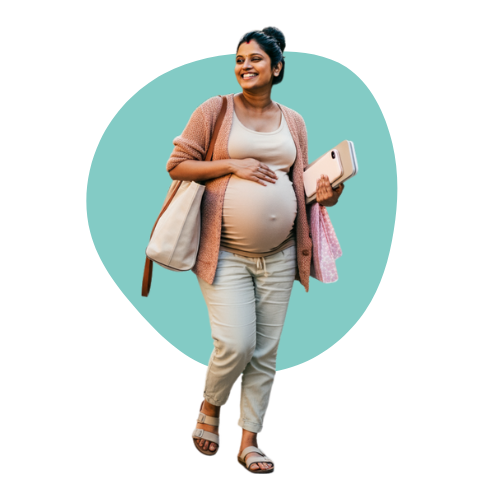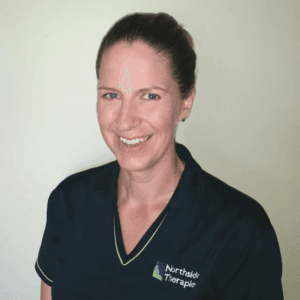We have experience treating:
At Northside Therapies, our Osteopaths have a broad range of skills to help you with the areas concerning you:
Around 20% of people will experience pelvic girdle pain (PGP) during pregnancy (Vleeming 2008) and it is one of the most common reasons for patients to seek osteopathic treatment.
There are multiple factors that can contribute to experiencing PGP in pregnancy and it is important to understand what is causing your pain so that an appropriate treatment plan can be developed for you.
Our osteopaths are highly experienced in supporting women (and pregnant people) throughout their pregnancy, assisting not only with pelvic girdle pain, but other aches and pains associated with pregnancy.
Vleeming A, Albert HB, Östgaard HC, Sturesson B, Stuge B. European guidelines for the diagnosis and treatment of pelvic girdle pain.
Eur Spine J 2008;17(6):794–819. doi: 10.1007/s00586-008-0602-4.
Birth preparation involves not only preparing the body physically, but also emotionally and psychologically. Our osteopaths have a thorough understanding of birth physiology, neurophysiology of pain during labour, pelvic mechanics and how the pelvic floor adapts and influences the birth process. Not only will our osteopaths help to address any pain or tension you may be experiencing, but they also provide education on all things birth, helping you prepare your body, mind and pelvic floor for the birth of your choice – this includes if you choose a caesarean birth.
Urinary incontinence (often called light bladder leakage) affects up to 50% of Australian women and 10% of Australian men, (Australian Institute of Health and Welfare. Incontinence in Australia. Canberra: AIHW; 2013)
Contrary to popular belief, urinary incontinence is not just an issue for older Australians, half of women experiencing incontinence are under the age of 50
Our pelvic health trained osteopaths understand the impact the bladder issues can have on quality of life. They are trained to take a holistic approach, assessing all the factors that may be contributing to the symptoms. Did you know that all of the below can influence bladder function;?irth preparation involves not only preparing the body physically, but also emotionally and psychologically. Our osteopaths have a thorough understanding of birth physiology, neurophysiology of pain during labour, pelvic mechanics and how the pelvic floor adapts and influences the birth process. Not only will our osteopaths help to address any pain or tension you may be experiencing, but they also provide education on all things birth, helping you prepare your body, mind and pelvic floor for the birth of your choice – this includes if you choose a caesarean birth.
- Breathing pattern
- Pelvic floor function – it’s not just about weakness, but tension or poor timing could be the issue
- Foot mechanics
- Estrogen levels
- Constipation
- Prolapse
- Posture
- Stress
- And so much more
UPelvic organ prolapse (POP) affects around 9% of Australian women. Symptoms of POP include:
- Recurrent urinary tract infections (UTIs)
- Pain or heaviness in the pelvic area
- A bulge in or out of the vagina
- Difficulty emptying the bladder or bowels
- Low back pain
- Sexual problems
Assessing and managing prolapse symptoms will require an internal assessment and treatment.
Our osteopaths take a holistic approach, considering spine and pelvic mechanics, hypermobility, breathing patterns, pelvic floor strength and coordination, abdominal muscle coordination, bowel health, toileting postures and much more to provide the best advice and treatment options for you.
A study by Meister et al, found that myofascial pain severity in the pelvic floor was associated with the subjective prolapse symptoms but not objective prolapse findings. Thus, by addressing the myofascial pain, improvements can be made in the subjective symptoms of prolapse. This is an important aspect of the osteopathic approach to assisting with prolapse as our osteopaths are trained in internal release techniques to improve the myofascial tone and function of the pelvic floor.
Meister MR, Sutcliffe S, Badu A, Ghetti C, Lowder JL. Pelvic floor myofascial pain severity and pelvic floor disorder symptom bother: is there a correlation?
Am J Obstet Gynecol. 2019 Sep;221(3):235.e1-235.e15. doi: 10.1016/j.ajog.2019.07.020. Epub 2019 Jul 15. PMID: 31319079; PMCID: PMC6732028.
Diastasis Recti is a separation of the rectus abdominus muscle at the linea alba. Whilst commonly associated with pregnancy, it can occur due to other causes.
Our osteopaths are able to assess for diastasis rectus abdominus muscle (DRAM) during pregnancy or post partum. They can identify factors that will increase the risks of developing or increasing DRAM and advise on treatment, exercises and advice.
It’s important to note that all women will develop a DRAM at full term in pregnancy. It is about understanding what is normal and what can be done to reduce the risk for an overstretch or weaking of the tissues.
Nearly three quarters of Australian women report painful periods (Pitt et.al), whilst around 10-15% experience endometriosis,(Rowlands IJ, Abbott JA, Montgomery GW, Hockey R, Rogers P and Mishra GD (2021) ‘Prevalence and incidence of endometriosis in Australian women: a data linkage cohort study’. BJOG 128: 657– 665.)
Our pelvic health osteopaths can work with patients experiencing endometriosis or dysmenorrhea. Treatment aims to improve circulation and drainage, address adhesions and scar tissue, as well as reduce the allostatic load. These factors may all contribute to the degree of pain experienced. Whilst not a cure for endometriosis, the aim is to improve the quality of life for women experiencing pain and discomfort.
Pitts MK, Ferris JA, Smith AM, Shelley JM, Richters J. Prevalence and correlates of pelvic pain in Australian women. Med J Aust. 2008;189(3):138-43.
Whilst not openly talked about pelvic pain and pain with intimacy is common. A report by Pitts et al found that 14% on women reported experiencing dyspareunia (pain with intercourse).
Pelvic pain and symptoms include
- Dysparunia
- Vulvodynia
- Vestibulodynia
- Vaginismus
- Hyperstimulation of the clitoris
Our osteopaths are able to do assessments to identify physical factors that may be contributing to your symptoms.
What happens in my appointment?
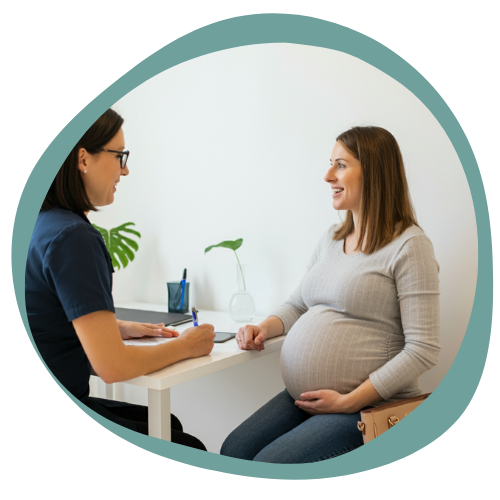
Step 1: Discuss
At your first appointment, we will do a full history. Notes will be taken of any important information and added to your file for future treatments.
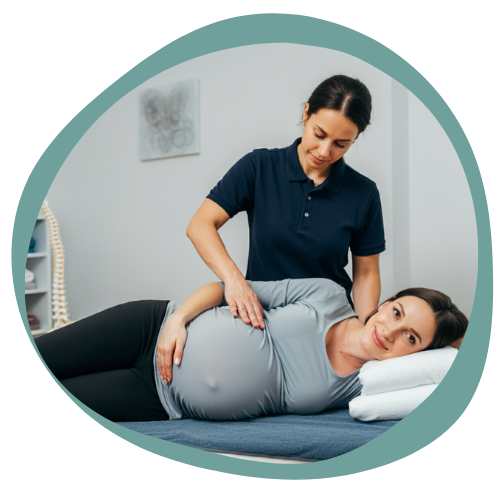
Step 2: Treat
We then work through an external physical examination and osteopathic treatment. We use a variety of techniques depending on your symptoms, age, health and preferences.
If internal examination is recommended, written consent will be obtained first.
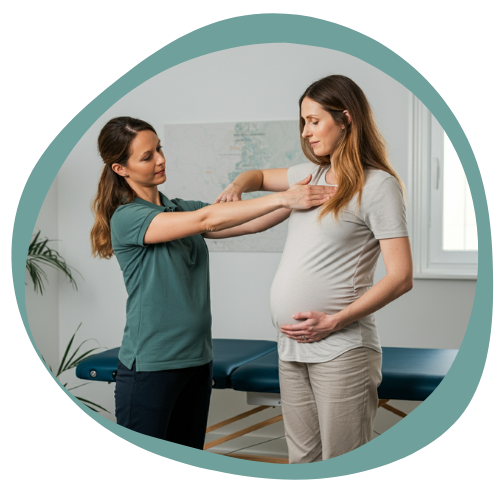
Step 3: Review
Your Osteopath will give you some ideas about the next steps for your treatment. This may involve some things you can do at home or a follow-up appointment.
FAQs
Many issues can be assessed and treated with an external approach and this is the first option offered.
For internal assessment and treatment written consent will be obtained, to ensure you are aware of what is involved and are happy to proceed.
With consent, it may occur at your first appointment, but more commonly a follow-up appointment will be made.
You are in control and can change your mind at any time.
Some techniques may require you to undress to underwear, if this is the case you will be offered a gown and a draping sheet will be used. If you do not wish to undress, please wear loose, light clothing to your treatment.
A range of gentle osteopathic techniques focusing on the muscles and fascia, nerves, circulation and viscera (organs)
Internal techniques may be recommended.
We understand that pelvic health issues are of a sensitive nature. Please contact us if you have any questions and one of our pelvic health trained osteopaths will be happy to chat with you.
You do not need a referral to seek treatment from an osteopath.
In-Store Purchases
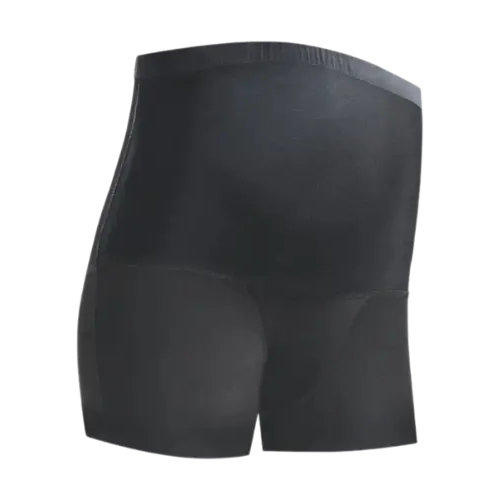
SRC Pregnancy Shorts
Varying sizes and colours available in-store
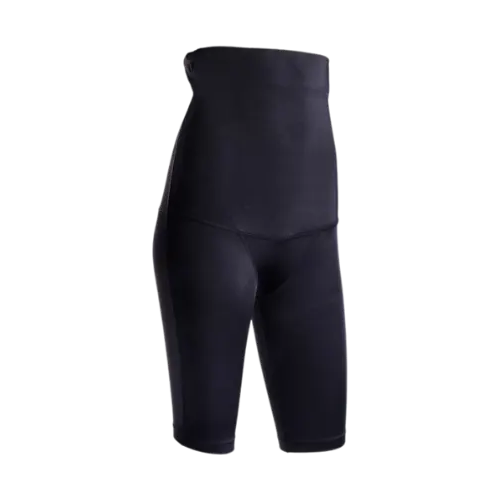
SRC Recovery Shorts
Varying sizes and colours available in-store
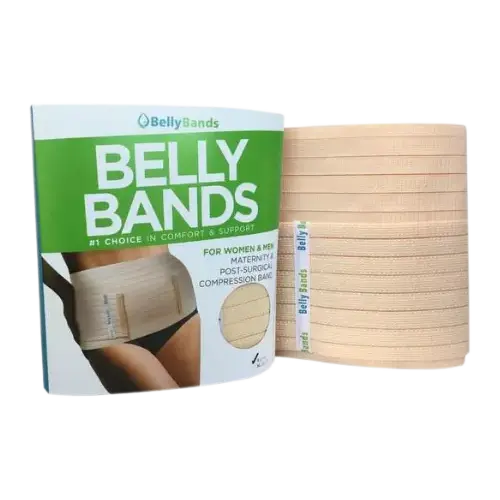
Belly Bands
Varying sizes and colours available in-store

